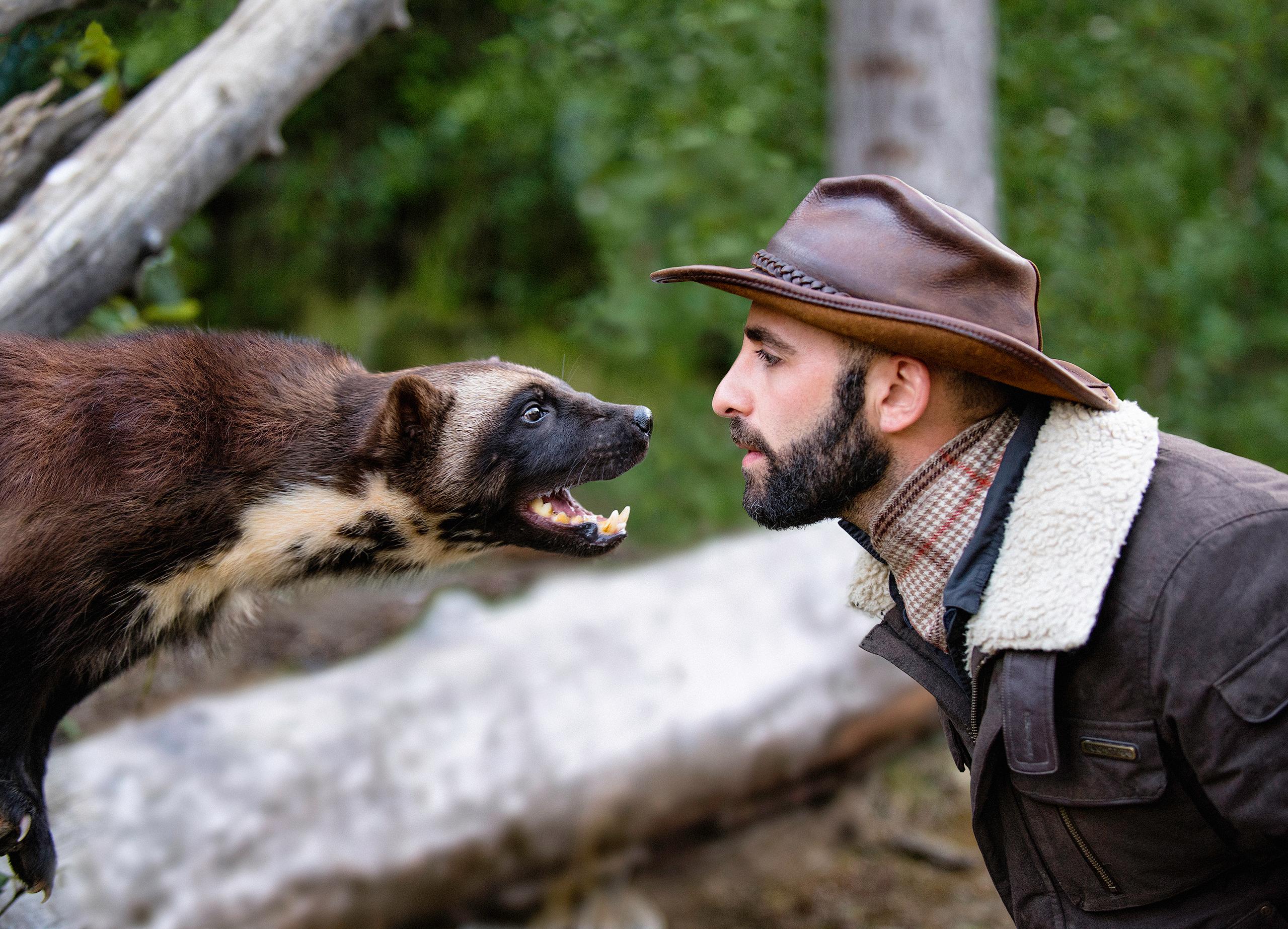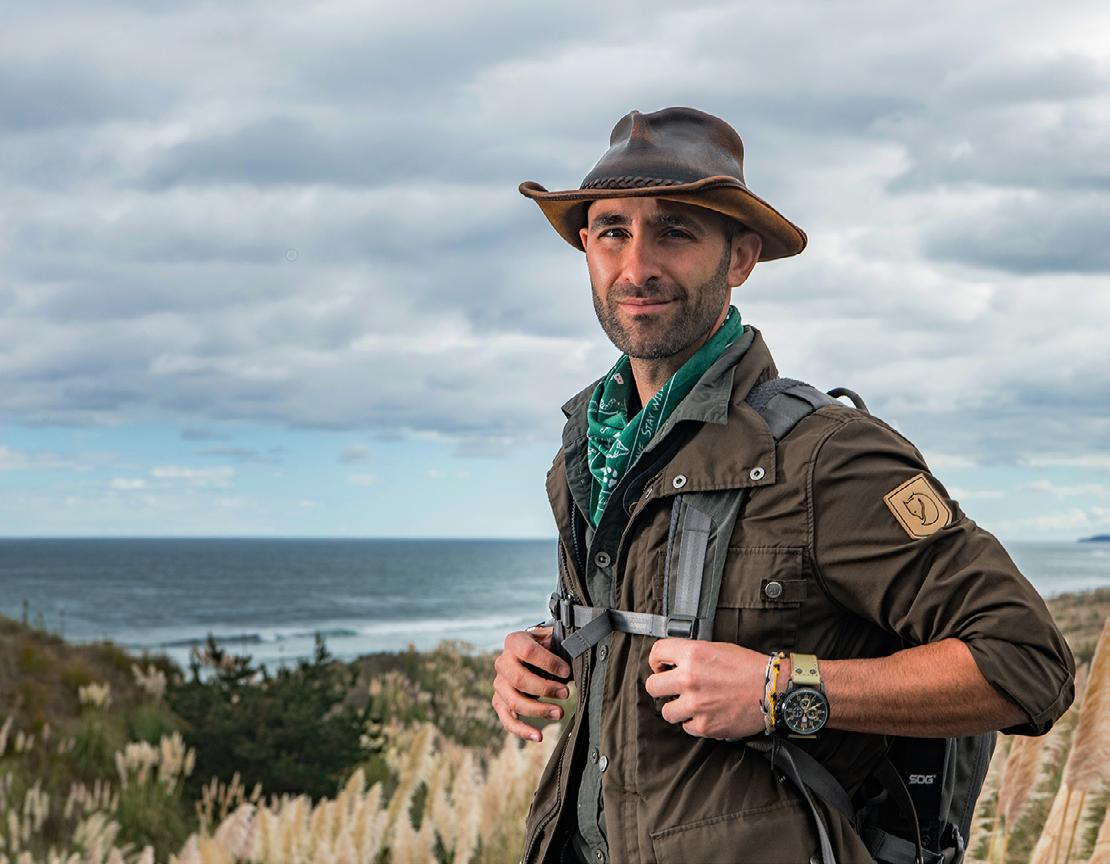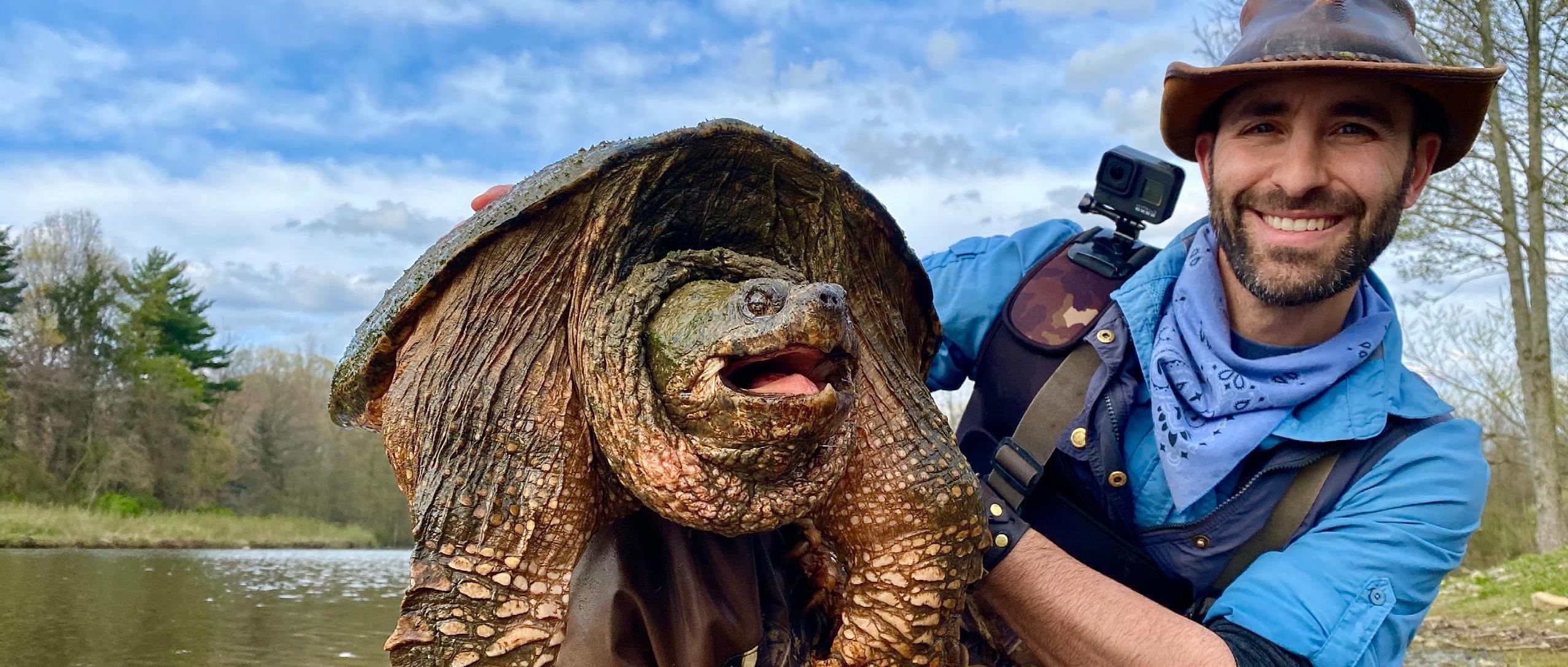
11 minute read
COYOTE PETERSON— WILDLIFE EXPERT, YOUTUBE CREATOR
COYOTE PETERSON
WRITERS/REPORTERS: Maya Donalds, Eliza Gould, Semira Robinson, Alice Leiden, Jacob Taichman-Weitzman, Aggie Robinson, Emerson Swift, Caroline Yelverton
Advertisement
SCHOOLS: Mount Tamalpais School, Marin Horizon, Mill Valley Middle School, San Rafael High School, Phillips Academy, Saint Hilary School and Tamalpais High School
A D V E N T U R E
We interviewed Coyote Peterson, a wildlife expert, filmmaker, YouTube creator, TV personality and more — beginning by asking him to describe himself. We took in all of the cool animal artifacts, paintings and posters on his wall and knew instantly he was very much like us— a big kid. He opened up by saying, “I would say I’m goofy. Considering I’m 39 years old, most people still look at me as like a 12-year-old kid for the most part. I’m like a perpetual child. I’m fearless — I’ll throw myself into 10-foot-deep of water to catch crazy reptiles. I’m also incredibly driven from a business perspective. One thing many people don’t know is, I’m much more involved behind the scenes than somebody who’s typically in front of the camera. I never wanted to be a person who was in front of the camera. I wanted to be a business leader, a visionary, a film producer, director, somebody that was making the entire vision happen. I’m a very driven person when it comes to wanting to make Brave Wilderness a success.
Q: Where did you get the name Coyote?
My birth name is Nathaniel. The nickname Coyote was given to me by my mom when I was about eight years old. At that time, Warner Brothers cartoons were very popular. There was a show named Wile E. Coyote and the Road Runner, and the Coyote was always chasing the Roadrunner trying to catch it. When I was younger, we used to travel out to Arizona and Road Runners are really good at catching and eating lizards. I would actually follow the Road Runners around hoping that they would lead me to lizards.My mom started calling me Coyote like the Warner Brothers cartoon because I was always chasing the Roadrunners around. Eventually, that nickname kind of caught wind with my neighborhood friends. And for a long time, it was “the Coyote.” And then when we started developing the shows, it became “Coyote.”
Q: Why do you enjoy getting close to dangerous animals?
After I graduated from college, I combined my love of filmmaking with the world of animals and asked myself, ‘how do I bring both of these things together to start making content?’ I eventually landed on distributing content on YouTube, and it kind of took off from there. I’ve always been super passionate about animals and wanting to share their world with the human world. I think there’s a lot of things that people are afraid of, especially within the natural world. We try our best to help people get over those fears of things. Even though it seems as if I do some pretty crazy stuff every now and again, we feel that by getting people up close with animals through the art of cinematography, we are helping them overcome a lot of their fears.
Q: What was one of your most exciting adventures?
We do a lot of pre-production work before we actually head out into the field, whether that’s researching species, and other potential environmental hazards, or just really knowing about one specifically targeted animal. This is probably one of the most exciting elements — getting yourself ready to go out into the wild and potentially have that encounter. One exciting trip we took was to Texas. We had a very big production trip and filmed alligator snapping turtles, alligator gars. We filmed the cicada killer episode that came out recently that was really, really popular.
Q: What is one of your most vivid memories from growing up?
When I was between eight and 10 years old, I caught my first big common snapping turtle, one that I was sort of stalking and trying to catch all summer long. When I finally caught it, this turtle weighed about half of what I weighed. It was a forty-plus pound turtle, and for a little eight-year-old kid to catch a gargantuan reptile of that magnitude at that age for me made me realize anything is possible. Where I live in Columbus, Ohio, I do a lot of research on the common snapping turtle populations that live here at our local metro-parks. One of my hobbies every spring, even if I’m not filming is to go out and check on the population of turtles. I catch them, I make sure that they’re in good health, I collect biometric data, and basically make sure that the population is thriving, and that everybody’s made it through their winter of hibernation.
Q: When did you decide you wanted to make this your career?
When I got out of college in 2010, I really started recognizing that there was a lack of animal adventure content in the media. There was a very popular show on Discovery channel called Man vs Wild with Bear Grylls. But Bear’s career is very different. He was teaching people how to survive in the wild, which involves killing and eating animals. We looked at that design and said, “Well, we definitely don’t want to be killing and eating animals. How do we bring back the style of what Steve Irwin and Jeff Corwin had produced?” They were certainly very inspirational to me. And we decided we need to create this type of animal content for the next generation. The good thing that we found is that people of all generations, from age four to 104, seem to enjoy brave wilderness content. We’re very thankful for that.
Q: What inspired the stung by/bit by collection of videos?
First, to be an animal presenter, you actually have to be really good at not being bitten or stung by things. So, it’s pretty ironic that we found by me intentionally getting bitten and stung by insects and animals, that it was going to be insanely popular. This came about because we did a video about a porcupine that we filmed in Montana. The episode was never supposed to be about me getting quilled by the porcupine. This was a porcupine that had been rescued and was being raised in captivity; we brought it out into a natural looking setting. We’re going to set it up. I was just going to talk about some facts about this animal. The handlers that were helping us work with the porcupine took it out of its little carrying case. They had these crazy leather gloves that like came up to their elbows. I thought ‘where’s my gloves? I don’t have any gloves.’ I was supposed to be interacting with the porcupine. They started telling me about the quills and how most people don’t understand how quills work or even the proper way to remove them from their pet if their pet gets too
— Coyote Peterson
close to a porcupine. We’re thinking this is really interesting. I asked them, ‘Could we show people what to do by letting me get close to the porcupine?’ They said, ‘Knock yourself out. You want to get quilled by a porcupine, go for it.’ It was that video that set all in motion — experimenting with these seemingly worst-case scenarios of getting bitten or stung or coiled or pinched by a number of different animal species.
Q: How does fear factor into the job?
One of the big goals with Brave Wilderness is to help people overcome some of their fears. I say that there’s the three big S’s: Sharks, Snakes and Spiders. Those are probably the things that people are most afraid of in the animal kingdom. But those are three things that really want nothing to do with humans. In almost every instance, where there is a human or an animal interaction with one of those species, it comes from being in the wrong place at the wrong time, or a case of mistaken identity. A shark might think that a human is a prey item, because a human is swimming on something like a surfboard in the ocean. If you’re going to go on the ocean, you’re going to enter the realm of a predator like a shark, you’re willingly putting yourself on the potential dinner table. If you’re going to take those risks, you have to be aware of the outcome that could possibly come from it. So, for Brave Wilderness, it’s definitely about helping people overcome their fears of different creatures. For me, when it comes to being afraid of getting bitten or stung by something intentionally, it takes a lot to build up your courage to actually go through it. It’s such a reward to be able to share these stories about these animals with the audience. Because if people get entertainment, enjoyment and most importantly, the education in what it is, then I feel like we’re doing a good job.
Q: Your experience being stung by the Cicada Killer could have been fatal; how do you ensure that doesn’t happen in future scenarios?
We do a lot of research ahead of time. There are very few instances where people have had an allergic reaction to a sting from something like a Bullet Ant or a Tarantula Hawk or have ever died from it. In a worst-case scenario, if I were to ever go into anaphylactic shock, you’ll always notice in our sting episodes, we have something called an epinephrine pen, where if I had a negative reaction, we could boost me full of the epinephrine essentially. This would give me enough time to get to a medical establishment, and I would probably be just fine. Another thing that we always have is medical personnel on standby. In an absolute worst, worst case scenario, we have an insurance plan and a satellite phone with a red button on it that if you press it, a life-flight helicopter will literally show up as fast as they can get one out there. So, we take a lot of precautions when it comes to putting my life on the line for some of these human guinea pig experiments.

Q: How do you use your platform to raise conservation awareness?
Currently we’re in the process of doing a huge fundraiser for animals in South Africa, specifically a Game Reserve called Kariega Game Reserve where the most famous Rhino in the world, Tandy lives. Tandy was a victim of poaching many years ago, and she managed to survive. But it’s a sensitive subject to walk that line of animal cruelty or poaching, especially with our younger audience. So, it is something that we’re going to start navigating into more as the brand grows. We looked at it as our place to bring people education about animals, show them what exists in the natural world, make slight mentions of some of these political driven initiatives, but to let the audience sort of make that choice for themselves how they would get involved.
Q: What do you look forward to with the show?
The fun thing about producing content for Brave Wilderness, and certainly being able to release it in the digital world — YouTube, Facebook, and Instagram and all these wonderful platforms is that there’s always another adventure to be had. With animals specifically, there are so many countless species. What’s exciting for us is that there’s always another animal story that we could tell. And even if we’ve told an animal story once, you can always go back and tell it again in a different way. And that might be because technology is advanced...We’re having some things in development right now surrounding video games and virtual reality, which is a completely crazy new futuristic direction to be taking content. We want to be on the forefront of creating that animal adventure content so that when you put on your Oculus system, or your Google Glass, Brave Wilderness is the brand you’re experiencing. And if it’s something beyond an adventure that we’re looking forward to, it’s business developments within the world of entertainment.
I N T O
T H E W I L D

Q: Have you or your teammates experienced any near- death experiences with animals?
“There was a pretty close call with a mother grizzly bear and her three cubs on the side of a river in Alaska, where a mother bear was upwind and upriver, which means that she couldn’t hear or smell us. She and her three cubs were coming straight at me and one of my cinematographers. The bear got within 75 yards. A grizzly bear can cover the distance of 75 yards in a matter of seconds. We had to get her attention by waving our arms and screaming ‘Yo, Bear, Yo, Bear, we’re right here. Don’t come any closer bear!’”
And she stood up on her back legs and stared us down. Nothing is scarier than seeing a mother grizzly bear in that moment where she’s going to either decide that she’s going to attack and take out the potential threat to her cubs, or she’s going to take the cubs and go in the opposite direction. Fortunately for us, she took the cubs and went in the opposite direction. So, it made for a really cool story. But it was definitely a very scary heart racing moment.”

